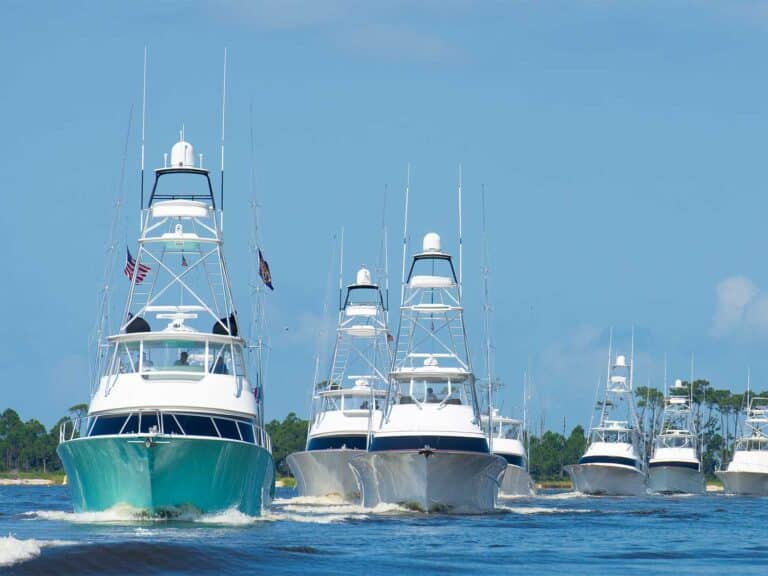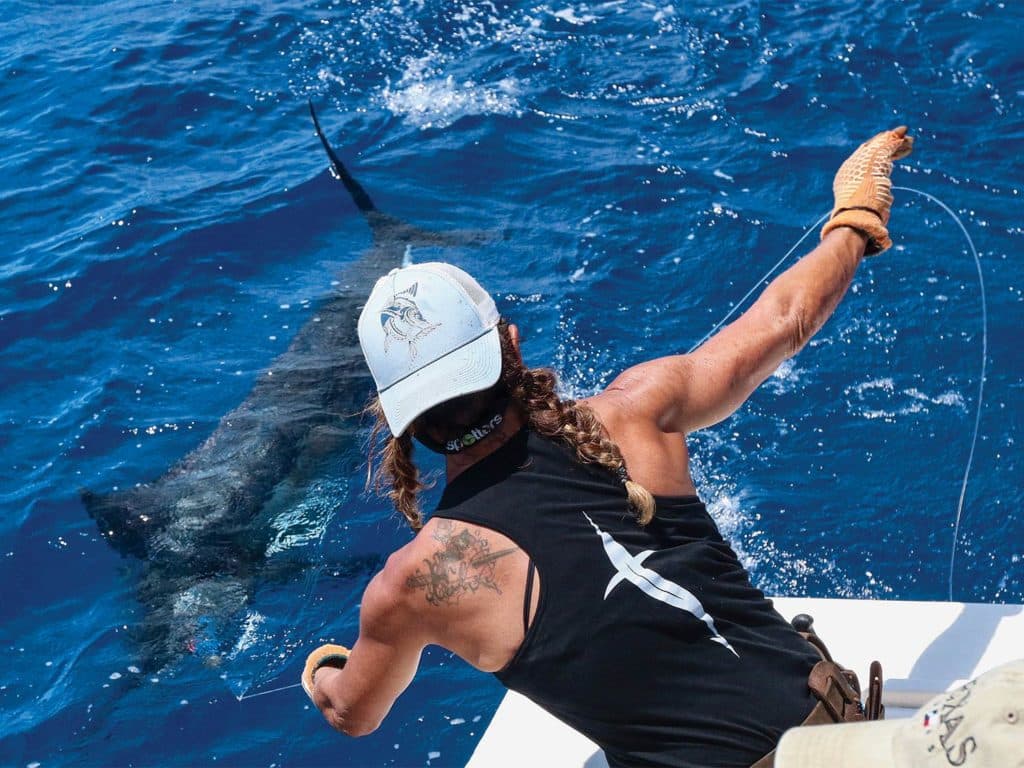
I came to Kona for one reason: to meet the professional female fishermen who all seem to be doing just fine here. And despite the relatively easy fishery and calm waters, it’s all fun and games until you’re hooked up to the big one. That’s where experience makes an entrance, and they must shine. Their reputations are riding on it.
You would be hard-pressed to make a don’t-do list when it comes to Kona, Hawaii. Trolling these waters is like quietly floating over a sapphire-blue cloak of velvet sprinkled with diamonds. There is a certain peacefulness here: a love for ohana—family—and everything that goes along with it. The people of Kona, specifically, are about as nature loving as you can get—minus the Birkenstocks—and it shows. There is no trash littering the roadsides, and practically every local eats sea-to-table. If you fish for a living, you’d be crazy not to make an appearance here, at least for one summer.
Traditionally, women of Hawaiian culture were restricted to foraging the shores, and only select men—called po’o lawai’a—were permitted to fish offshore. However, as time passed and the European influence took hold, the rules were eventually loosened. Of all the places I’ve traveled, I have never seen more ladies in any one charter fleet. Kona is truly a professional female fisherman’s dream, but it comes with a price, and success does not come easily. These women, no matter how they got here, still have to prove themselves, a task I personally know to be difficult.
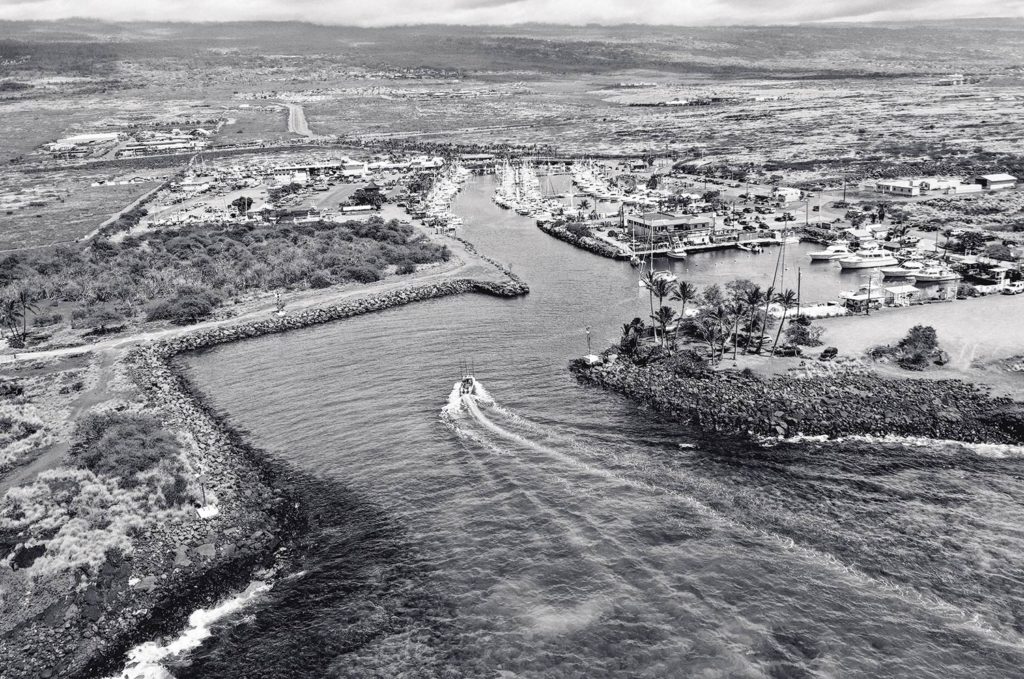
First, you need opportunity, then you need skill, and finally, you need the respect of your peers, especially in Kona; all that comes from not only the ability to find fish, but also the ability to stay relevant in the catch reports. Each of these three women have managed to carve out their own little corner in Honokohau Harbor and find some solace in each other. Your tribe is your tribe, and there’s no disputing that.
It’s in the Blood
Little did Florida State University dance major Deneen Wargo know she would eventually end up a professional fishing captain when she met the love of her life, Brian, in Tallahassee. Brian was a surfer and a fisherman, who’s love for the water rekindled old interests for Deneen. They were a free-spirited, adventurous couple who enjoyed the coastal life out of college, fishing out of Destin Harbor, and bartending and waiting tables on Santa Rosa Beach while living on their 30-foot sailboat.
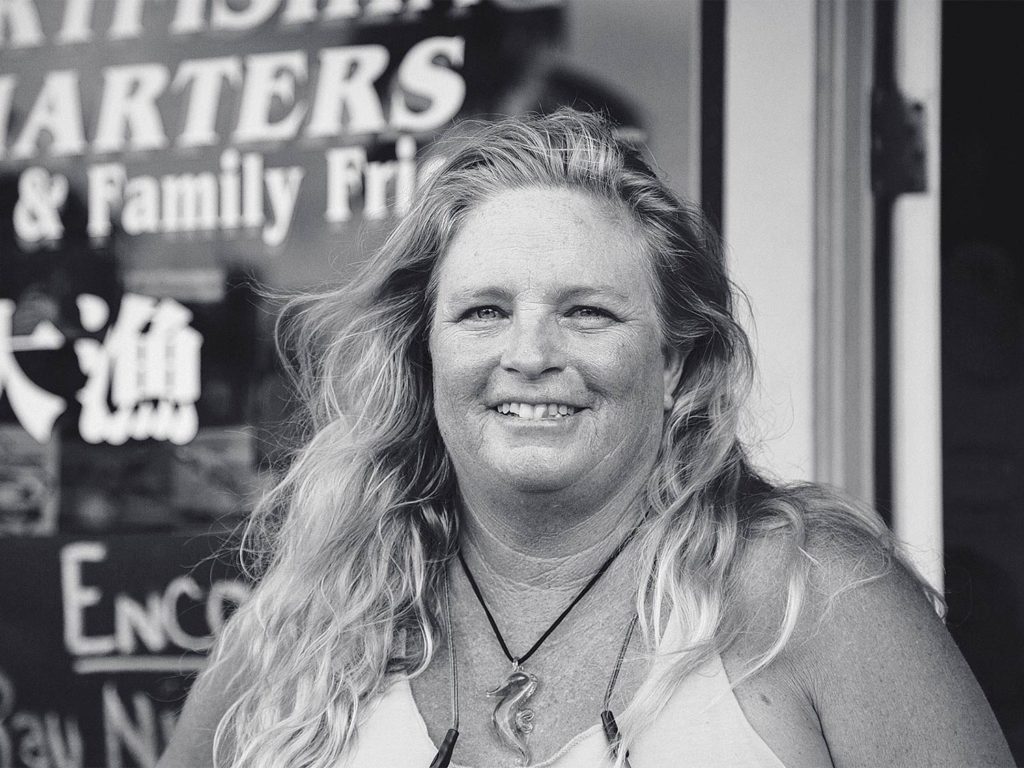
“My life was almost over before it started,” Deneen says, telling the story of how her grandmother got a funny feeling right before she and Deneen were to accompany Deneen’s parents on a boat delivery to the Bahamas when she was just an infant.
“My grandmother took me off the boat at the last minute, and the boat ended up sinking during the trip,” she recalls. “My mom said it was a good thing too because they could barely save themselves, much less try to retrieve a baby from a crib down below. But for whatever reason, I’m still here.” Her mother never fully recovered from the traumatic event and tried to steer her daughter away from boats for most of Deneen’s early years, but Deneen’s love for the ocean and all things in it was too much for her to deny.
After years of sailing to the Bahamas in the winter—each trip planned with the intention of making it to the Caribbean, which, unfortunately, never happened—Deneen and Brian would end up back in Destin. They both got their captain’s licenses and started their fishing careers after Hurricane Opal struck the Destin area in 1995.
The Wargos initially went to Kona to visit Deneen’s sister for a couple of months but never left. The allure of big fish and big surf was the deciding factor, and 24 years later, they haven’t looked back.
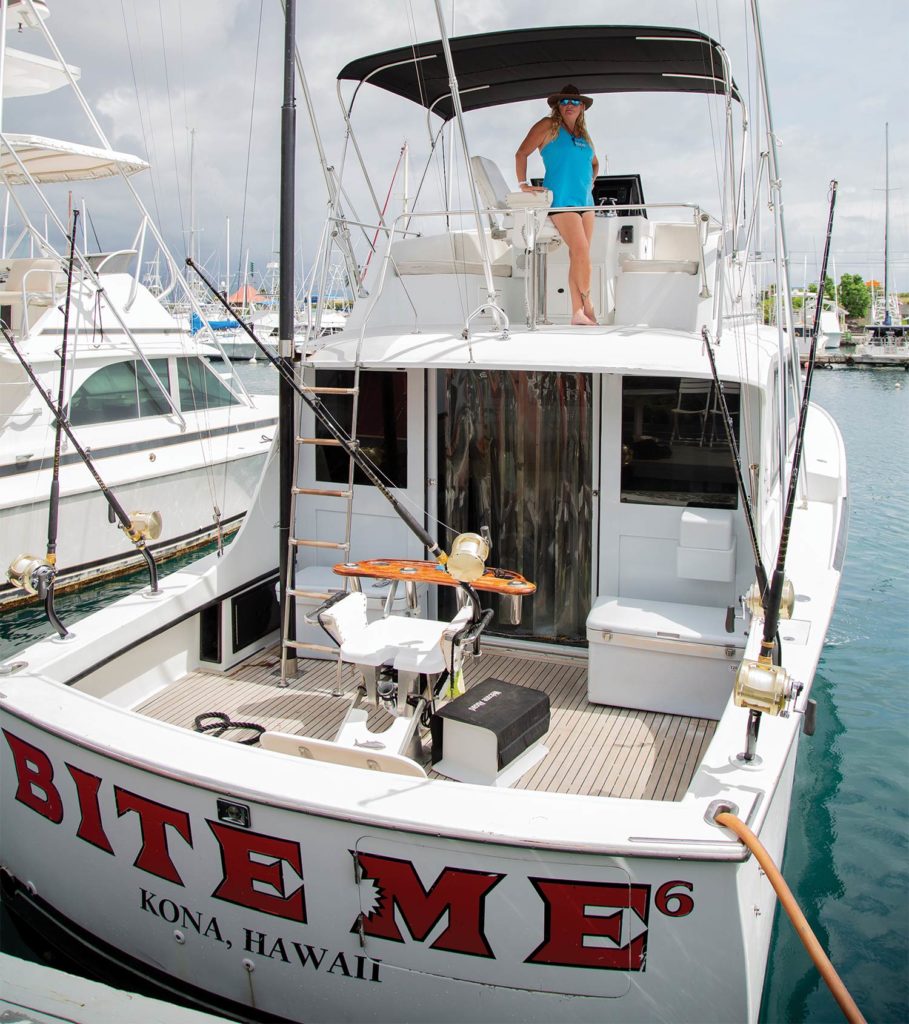
“Brian got a fishing job right away,” Deneen says, “and I started running a submarine for tourists.” After about eight years, Brian and a friend purchased Bite Me 1—a vessel that is now part of a booming charter business—and then a restaurant, all based in Honokohau Harbor, 2 miles from the lively Kailua-Kona district.
“Brian would sometimes overbook himself, and I’d have to fill in,” Deneen recalls. “The first time, he gave me the worst deckhand in the harbor and sent me out on a boat called Hua Pala. I came back with one ono flag flying. There hadn’t been a female big-game skipper [since Myrna Holdridge] in the harbor for over 20 years, so it was all abuzz,” she continues. “They couldn’t believe I caught a fish.”
Being naive, Deneen just thought, Of course I caught a fish—I went fishing, not fully understanding the Kona fishery at the time.
As the years passed and the Bite Me boats thrived, Deneen found herself doing many jobs, including managing the restaurant and filling in for crew who needed days off. In 2009, she graduated to her own Bite Me boat in Hawaii’s largest charter fleet. And with so many boats competing for charters, the mini tournaments continue to go on daily, from hero to zero.
Watch: Capt. Chris Donato shows us his home waters off Kona aboard Benchmark, his 37-foot Merritt.
“I’ve found that most guys really don’t like getting bested by girls on a primitive level,” she says, “so in order to break in and be successful in any male-dominated industry, it would behoove ladies to come in under the radar and get them to be on your cheering squad. Before they know it, everyone is on the same level; you have won their respect, and [the women] win.” Deneen says it’s like a long-term sneak attack. Strong women can walk into a room and everyone knows it; it’s a discreet but powerful thing.
Luckily for Deneen, her biggest fans are some of the best fishermen in the world, and those are the only opinions that matter to her.
Deneen is a competitive force to be reckoned with. She’s killed more fish than she can count and released even more than that, and that knowledge and skill set are invaluable to her. “When I’m fishing a tournament, everyone says they can’t relax or write me off, and that makes me happy.”
And why wouldn’t it? She’s arrived. And she’s not going anywhere.
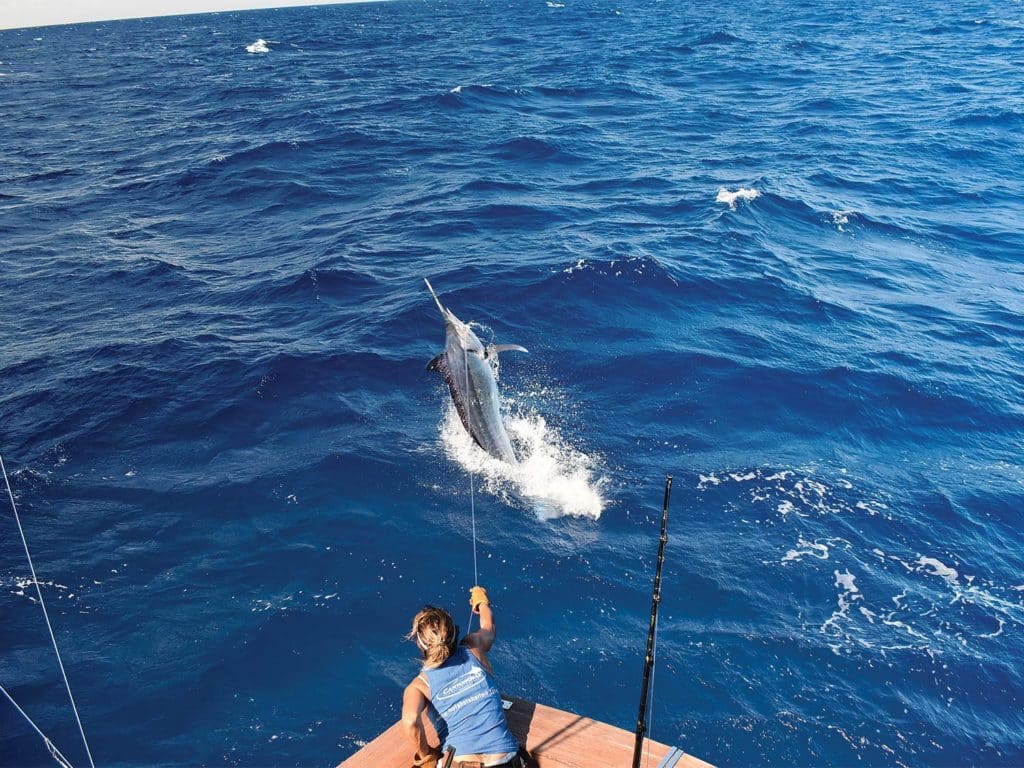
The Favorite Son
Raised on Oahu, Tara Thompson-Disnard probably has more cockpit chops than any woman I’ve ever seen—learning in spots like Kona and Cape Verde, and spending over a decade in Australia wiring some of the largest black marlin on Earth. She is intimidating, yes, but underneath, she is a sweetheart.
“I’m a tomboy. I grew up as my father and grandfather’s favorite son,” Thompson-Disnard says with a laugh, reminiscing about how she would help her grandfather empty his lobster traps, or the trout-fishing excursions she took with her father.
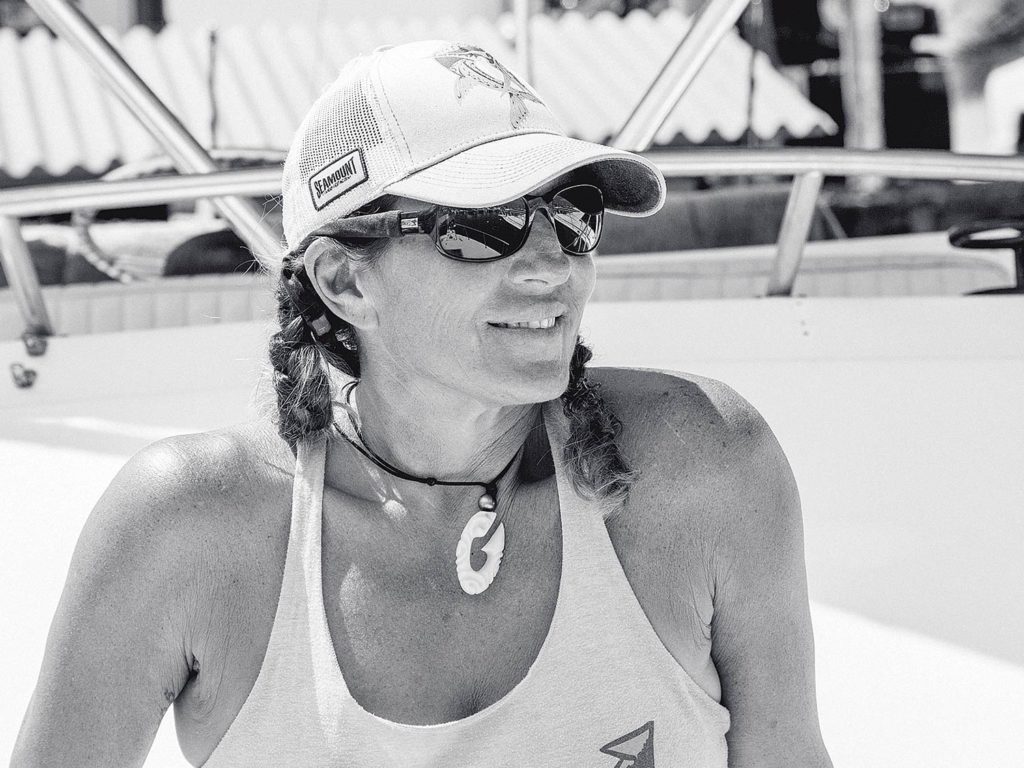
And just like all women who make their living in sport fishing, it usually takes a childhood spark to create a flame that can’t be extinguished, one with a certain je ne sais quoi to a) get on a boat where the crew who has no preconceived ideas of why she is there; and b) not only handle the rigors this job has on the body, but also be extra careful when managing a professional career and personal reputation.
“Even though I’d like to think that I’ve proved myself as a fisherman, at the end of the day, many people still can’t see beyond the fact that I am female,” she says, “and I can’t change that, so over the years, I’ve come to accept that I won’t ever be able to.”
In most of the locales she’s worked, there have been few, if any, women around, but she welcomes new girls on the scene, provided they can prove themselves. Because to her, as long as you are able to do your job, your sex doesn’t—and shouldn’t—matter.
Thompson-Disnard says the way women in this business are treated is based solely on how they present themselves. She’s worked hard to get where she is by way of her own merit, and she expects nothing less from a new girl wanting to make a go at sport fishing as a career. “In Kona, they either embrace you or they don’t,” she says, “and if you’re accepted, it’s because you earned it, nothing else.”
Having recently returned to Hawaii, she is learning the ropes of the fishery from a different viewpoint this time: the bridge. After having her ticket for 15 years, it was time to leave the deck. “I loved being in the cockpit, but the natural progression is to make the move upstairs,” she says. “But I’ll be happy to work the deck any day if I’m asked to!”
Accepting a captain’s position aboard the 31-foot Blackfin High Noon, just weeks into her 2019 Kona season, she holds onto a competitive energy as she fine-tunes her skills to accommodate a fishery that is, well, old-school at best.
“Kona doesn’t like to reinvent the wheel,” she says. “Do I think you could bait-and-switch these fish, or catch them from a kite? Yes, I do, but the minute you lose a big fish, get spooled or break one off, the consensus in the harbor would be: Don’t fix what isn’t broken.” So, they don’t.
“There are two types of operations here,” she says. “The pelagic boats that are out to catch whatever is biting, and the marlin boats. If you book a professional marlin boat, then you’re going after marlin, that’s it; know it and understand it.”
In Kona, you never know when the big one is going to surface, so being prepared for that encounter is how the area is fished day in and day out. Clients come to Kona for big fish, and each captain wants a grander under their belt. Those fish do exist here, somewhere, and you don’t bring a knife to a gunfight. Thompson-Disnard says that if you aren’t looking for the big one, then you aren’t doing your job.
Thompson-Disnard is at home in Kona, and she plans on staying for a while. With a fishery that practically guarantees a blue marlin sighting every day of the week, no matter the time of year, the experiences gained are racked up quickly, so she’s around for the long haul.
To say Thompson-Disnard is eaten up with everything big-game fishing would be an understatement. And to be able to talk shop—and fish—with another female fisherman was a godsend, to say the least.
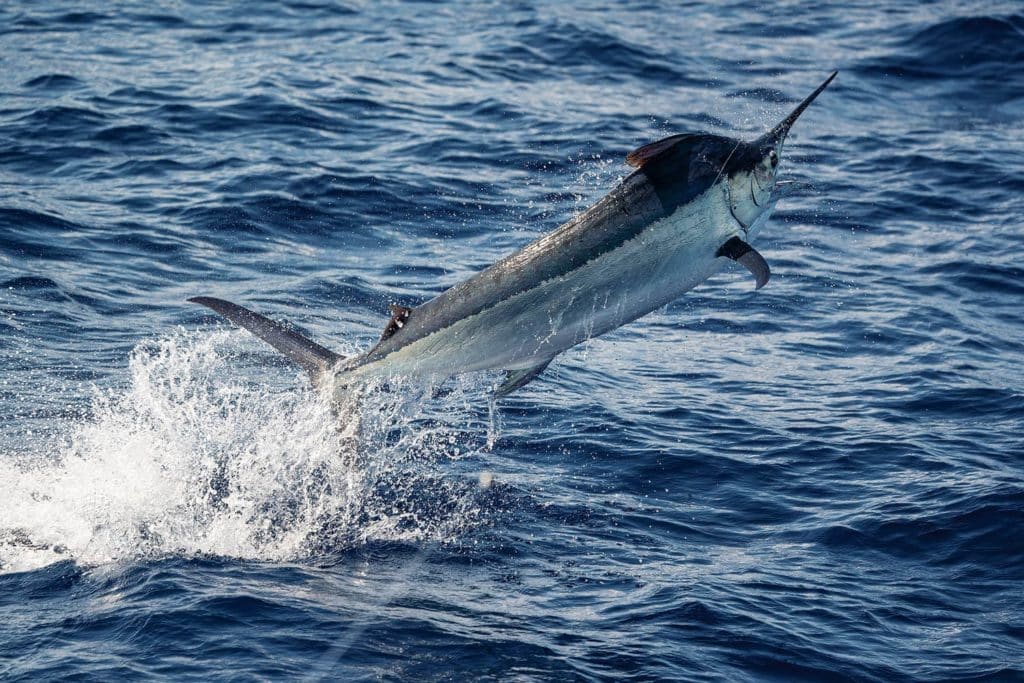
Honokohau’s Juliet
“You’d better pay attention, boy,” Capt. Marlin Parker said to the deckhand as he peeked over the transom of Molly Palmer’s charter boat, Camelot; she was teaching the deckie how to do their standard 100-hour oil change.
“That was a proud moment for me,” Palmer says, who arrived in Kona for good from Oakland, California, in 2011 with her husband, Shawn, and their bulldog.
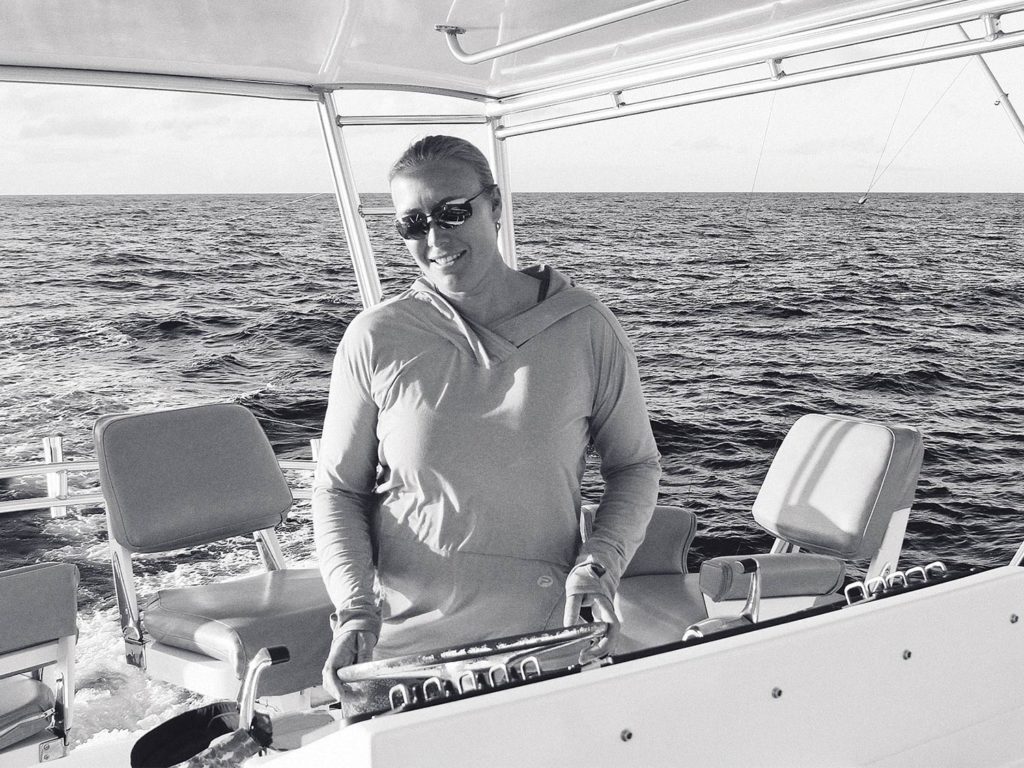
It’s quite a ride when you grow up blue crabbing on the Chesapeake Bay from a 30-foot center-console, see your first billfish right out of college, move to Oakland to farm marijuana for a living, save all your money for five years to take a vacation to Hawaii, and ultimately sell off your life for an opportunity to settle down on the Big Island—with no job. They had only each other—and a few charter experiences.
A plant science major, Palmer and her husband continued to run the farm in Oakland from halfway across the Pacific, but after a year, “we had no intentions of leaving,” she says.
“We had experience on charter boats in Kona, but when it came to making money, it was difficult to break the barrier,” Palmer says. She eventually got a job working for free on High Noon, splitting the tips with the other crewmembers. After a few of the captains saw her on deck, she was able to hop on with them and decided to get her captain’s license, just in case an opportunity presented itself.
After joining Capt. Neal Isaacs’ Anxious tournament team, Palmer found herself on the rod attached to a grander blue marlin in the 2012 Big Island Tournament. The fish died, and all attempts to plane it up failed, so the fish was disqualified by the crew, and they took turns getting it to the surface. “I didn’t see this as a missed opportunity at a world record or a cash prize,” Palmer says. “The publicity was way more than any other fish I’ve seen.”
Now Palmer had some acclaim, a handful of deckhand jobs, a captain’s license and a grander experience on her résumé, but that didn’t really translate into job opportunities. However, it did allow the locals to notice her work ethic, which is something she says she’s always had.
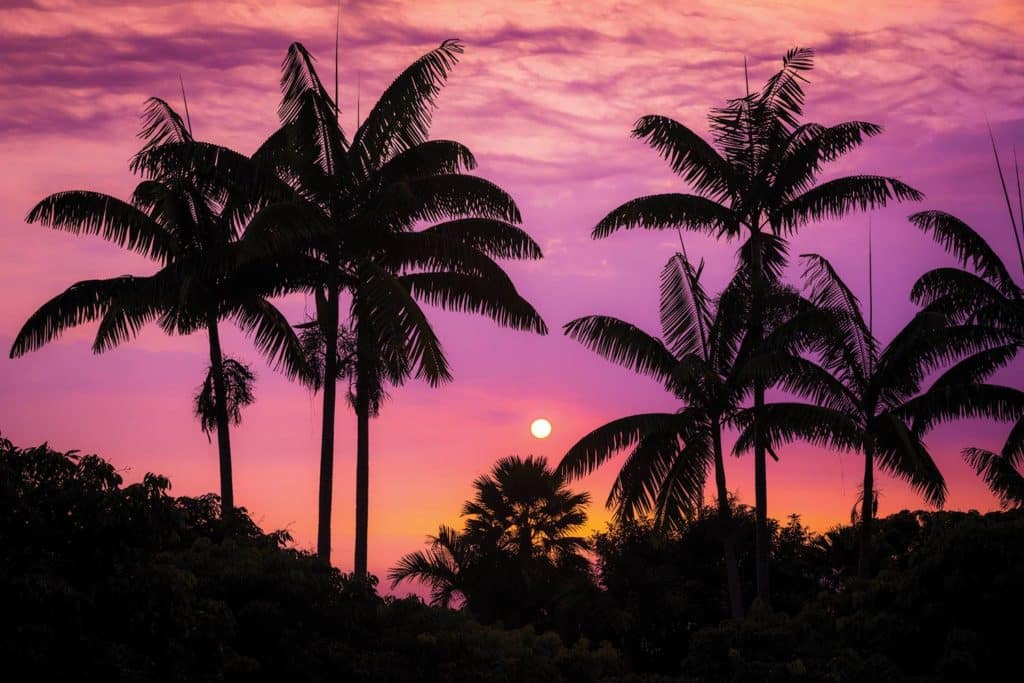
Finally, she was able to land a captain’s job on the 38-foot Hatteras Renegade, which she and her husband bought for “almost nothing.” The next thing she knew, they were charter-boat owners; however, without a charter permit or a slip in the harbor, the venture didn’t last. The one job that has lasted was the one she took on the 34-foot Camelot.
Palmer still loves her job, despite its limitations of budget and the schedule constraints of half-day bookings. “I don’t pretend to be able to compete with these high-dollar operations, but I do everything possible to give my charters the best experience that I can realistically offer.”
For four years now, Palmer has been running the operation when the owner is off-island. “I’m not the best fisherman in the harbor, but I am likely one of the best charter-boat captains in my community,” she says. “I understand the importance of each aspect of the job: maintaining the boat, pleasing the customers, pleasing the boss, hiring and training deckhands, and leading by example.”
Read Next: When (if ever) is it acceptable to kill a marlin? Five pros sound off.
Palmer insists, “Kona chooses who it wants,” and she says you either adjust or you leave, it’s that simple. And by the looks of things, Kona has chosen Palmer—at least for now.
The determination of any woman wanting to succeed in a male-dominated industry is nothing short of admirable. The pressure to fit into the culture here is high, the hours are long, and the job itself wreaks havoc on the body. These wahines are a living example of mind over matter—where willpower outshines physical shortcomings, and the desire to succeed certainly outweighs the fear.
There is definitely a place for female crewmembers in Kona, and it’s proven, not only by these ladies’ stories, but also by the fact that most who filter in don’t filter out. There is room for a woman to not only begin a career in sport fishing here, but also quickly gain experience and run boats, with little blowback from most of her peers. Perhaps there is a soft spot in the hearts of Kona’s male captains, I’m not sure; but what I do know is, unlike most other fishing destinations, there is a presence of women on deck, and that, in itself, is refreshing.






